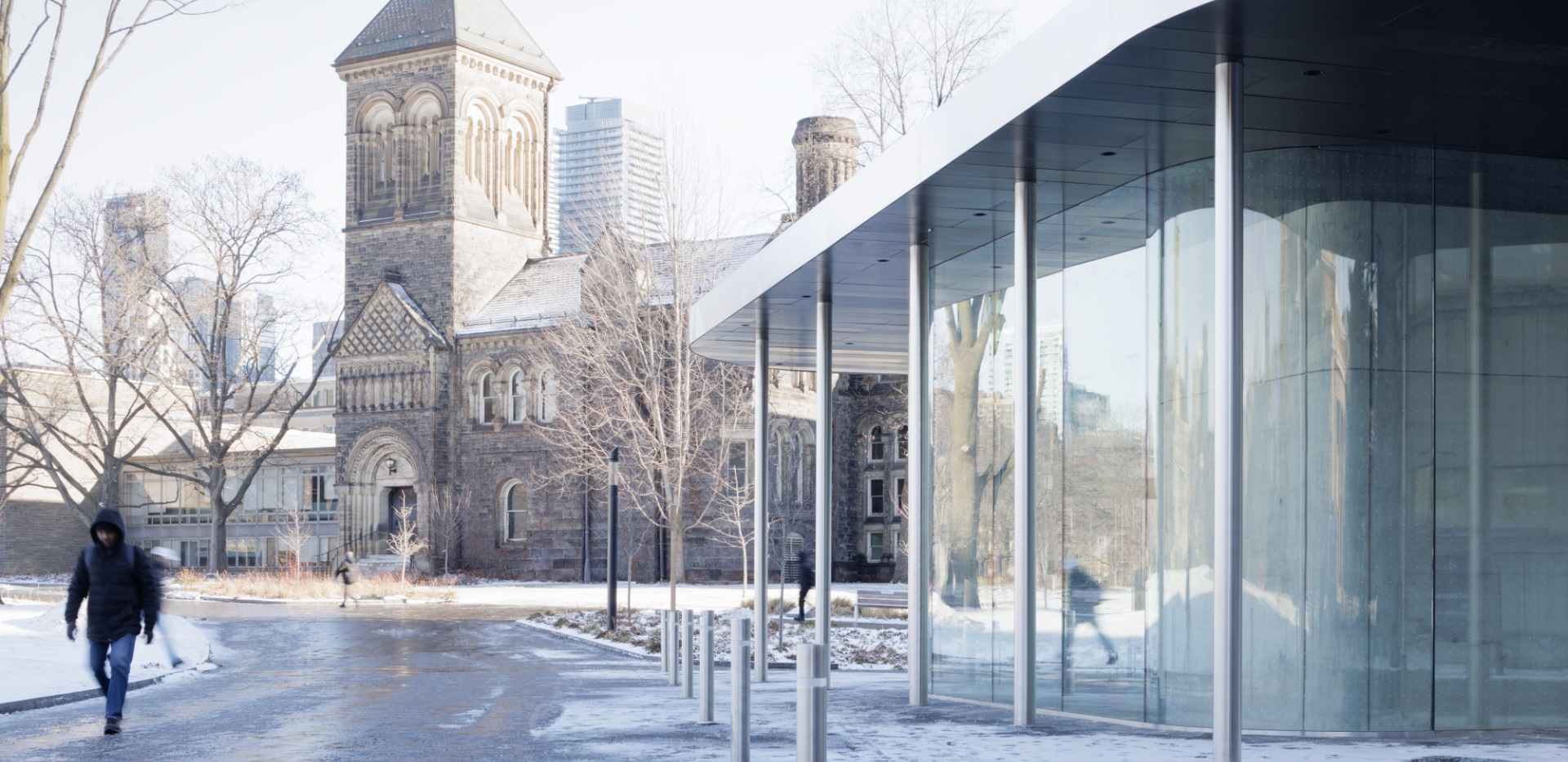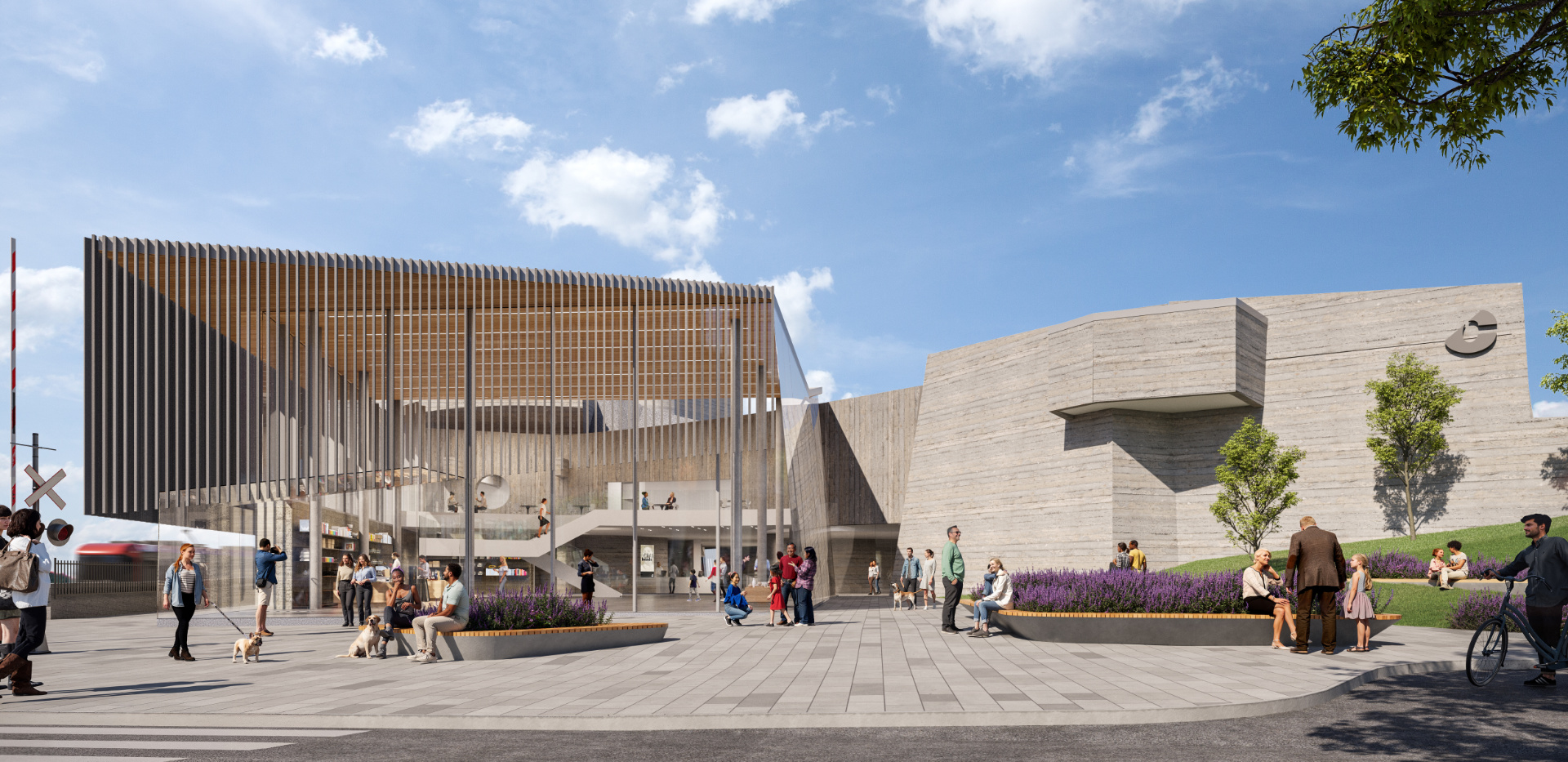KPMB’s Climate Statement

Article content
Click here to view Canadian Architect
Climate Change is The Problem
Climate change is the defining issue of our time. The world is already 1°C warmer[i] than it was in preindustrial times and our current infrastructure will take us past 1.5°C by mid-century. The next ten years are pivotal. In order to avoid 2°C of warming – widely understood as the tipping point into ecological catastrophe – we must dramatically reduce greenhouse gas emissions.[ii],[iii] Buildings are associated with approximately a third of all greenhouse gas emissions[iv], so architects have a special responsibility to help minimize the amount of warming to come, and to help our societies become resilient and adaptable in the face of the warming we have already caused. [v]
We Have the Answers
The technology needed to address the challenge of climate change already exists. Energy production across all industries accounts for almost 80% of global GHG emissions.[vi] Simply put, to arrest global warming we need to power the global economy with clean electricity instead of fossil fuels. [vii] Our imperative as architects is to electrify all buildings, both anticipating and helping to bring about a large-scale societal shift to clean electric power.
In markets with clean electricity grids, this largely eliminates operational GHG emissions from buildings. [viii] In markets where the electricity is generated in a carbon intensive way, electrified buildings are capable of becoming low/no carbon buildings when a clean electricity source becomes available and can reduce the current GHG impact with project-specific clean generation.
The resilience and adaptability measures required to address the warming already underway are more complex, and will require project-specific design ingenuity. [ix] But here too, the technologies required to meet the challenges exist.
Growth is Part of the Solution
Much of the current public conversation about addressing climate change presumes a false narrative: that we have to make a choice between privileging the economy or the environment – doing what’s best for one entails sacrificing the other. This is false. Making the investments required to meet the challenge of climate change will generate economic activity in the short term, and unlock the potential for innovation across a range of industries that will power economic growth over the long term. [x] Indeed, leading investors are concluding that ‘climate risk is investment risk’ and sustainability-integrated portfolios will provide better risk-adjusted returns over time.[xi]
Taking a step back, we see that economic growth is vital for human well-being. While not every instance of growth may be desirable, in aggregate, the rapid economic growth the world has witnessed in the past generation is nothing short of a miracle. In the last 35 years, while the global population has doubled from 3.7bn to 7.7bn, the number of people living in extreme poverty has fallen from 1.5bn to under 750 million (a proportional decline from over 42% of the population to less than 10%.[xii]) Maintaining this level of growth is critical to the well-being of billions of our fellow citizens.[xiii]
Simultaneously, while the global population continues to grow to an estimated levelling off point of 10bn people,[xiv] mass urban migration has resulted in an unprecedented need for new buildings.[xv] The imperative for architects is clear: we must design the buildings needed for our growing population in a climate-positive way, while continuing to drive the economic growth that advances human well-being.
The Next Ten Years will be Transformational
The next ten years are of critical importance to limiting the ultimate amount of warming that the globe will experience. The IPCC indicates that limiting global warming to 1.5°C would require reducing GHG emissions by 45 percent from 2010 levels by 2030, reaching ‘net zero’ around 2050. [xvi] Indeed, the expected emissions from existing infrastructure over its service life is enough to take the earth beyond 1.5°C of warming.[xvii] Thus, every decision moving forward needs to be the right decision — there is no room for kicking the can further down the road.
These years will also be transformational in the building industry. In Canada, progressive jurisdictions have implemented building standards designed to dramatically elevate the level of performance of buildings being built by 2030. [xviii] National and provincial codes are following this lead and, consequently, we can expect a generational shift in building practice over the decade.
Architects Have a Unique Opportunity
Many of the loudest voices in the climate change conversation today make solutions sound complicated and unattainable. In reality, many of the best climate change solutions will have the wonderful consequence of making life as we know it better.
Architects have a role to play in depicting that desirable future, to catalyse action today. Critically, this future is not a compromise or a sacrifice – it is a better, healthier, more enjoyable world that, given the option, anyone would choose.
KPMB is committed to championing this vision and working with our clients to make it a reality.
[i] “Global Land-Ocean Temperature Index.” Climate.nasa.gov. NASA’s Goddard Institute for Space Studies (GISS). https://climate.nasa.gov/vital-signs/global-temperature/. Accessed 12 April 2020.
[ii] For a discussion of the 2°C threshold, see Rich, Nathaniel. “Losing Earth: The Decade We Almost Stopped Climate Change.” New York Times Magazine, 1 August 2018. https://www.nytimes.com/interactive/2018/08/01/magazine/climate-change-losing-earth.html. Accessed 15 August 2018.
[iii] For a discussion of the potential effects of 2°C of warming, see Wallace-Wells, David. The Uninhabitable Earth, Crown Publishing Group, 2019.
[iv] “Towards a zero-emission, efficient, and resilient buildings and construction sector. Global Status Report 2017.” UN Environment and International Energy Agency, 2017. https://www.worldgbc.org/sites/default/files/UNEP%20188_GABC_en%20%28web%29.pdf. Accessed 15 April 2020.
[v] Kesik, Ted. “Resilience Planning Guide.” University of Toronto, 2017. https://www.daniels.utoronto.ca/faculty/kesik_t/PBS/Kesik-Resources/Resilience-Planning-Guide-v1.0-2017-11-19.pdf. Accessed 5 February 2020.
[vi] “Global Manmade Greenhouse Gas Emissions by Sector, 2013.” Climate Analysis Indicators Tool (World Resources Institute, 2017). Centre for Climate and Energy Solutions. https://www.c2es.org/content/international-emissions/. Accessed 12 April 2020.
[vii] Griffith, Saul. “How do we decarbonize?” Medium.com. 23 May 2019. https://medium.com/otherlab-news/how-do-we-decarbonize-7fc2fa84e887. Accessed 1 May 2020.
[viii] “Greenhouse gas intensity of electricity generation by province and territory.” Canada’s Renewable Power Landscape 2017 – Energy Market Analysis. Canada Energy Regulator. https://www.cer-rec.gc.ca/nrg/sttstc/lctrct/rprt/2017cndrnwblpwr/ghgmssn-eng.html?=undefined&wbdisable=true Accessed 1 February 2020.
[ix] Kesik, Ted. “Thermal Resilience Design Guide.” University of Toronto, 2019. https://www.daniels.utoronto.ca/faculty/kesik_t/PBS/Kesik-Resources/Thermal-Resilience-Guide-v1.0-May2019.pdf. Accessed 5 February 2020.
[x] “Final Report of the Expert Panel on Sustainable Finance.” Government of Canada, 2019. http://publications.gc.ca/collections/collection_2019/eccc/En4-350-2-2019-eng.pdf. Accessed 1 June 2020.
[xi] Fink, Larry. “A Fundamental Reshaping of Finance. Larry Fink’s Letter to CEO’s, 2020.” Blackrock, Inc. https://www.blackrock.com/corporate/investor-relations/larry-fink-ceo-letter. Accessed 26 January 2020.
[xii] “Distribution of population between different poverty thresholds, World, 1981 to 2015.” Our World in Data. https://ourworldindata.org/grapher/distribution-of-population-poverty-thresholds?stackMode=relative. Accessed 3 April 2020.
[xiii] Pinker, Steven. “Wealth.” Enlightenment Now: The Case for Reason, Science, Humanism, and Progress, Viking, 2018, pg. 87.
[xiv] Pinker, Steven. “The Environment.” Enlightenment Now: The Case for Reason, Science, Humanism, and Progress, Viking, 2018, pg. 125.
[xv] “Towards a zero-emission, efficient, and resilient buildings and construction sector. Global Status Report 2017.” UN Environment and International Energy Agency, 2017. https://www.worldgbc.org/sites/default/files/UNEP%20188_GABC_en%20%28web%29.pdf. Accessed 15 April 2020.
[xvi] “Summary for Policymakers. In: Global warming of 1.5°C. An IPCC Special Report on the impacts of global warming of 1.5°C above pre-industrial levels.” Intergovernmental Panel on Climate Change, 2018. https://www.ipcc.ch/sr15/. Accessed 15 January 2020.
[xvii] ”It’s too late for a carbon tax—it’s time for a world war against climate change.” Fast Company. 4 November 2019. https://www.fastcompany.com/90423806/its-too-late-for-a-carbon-tax-its-time-for-a-world-war-against-climate-change. Accessed 23 June 2020.
[xviii] See Toronto Green Standard, https://www.toronto.ca/city-government/planning-development/official-plan-guidelines/toronto-green-standard/. Also, BC Energy Step Code, https://energystepcode.ca/.
Related News
Year in review: Highlights from 2025
December 17, 2025Contemporary Calgary receives Canadian Architect Award of Merit
December 1, 2025
)
)
)